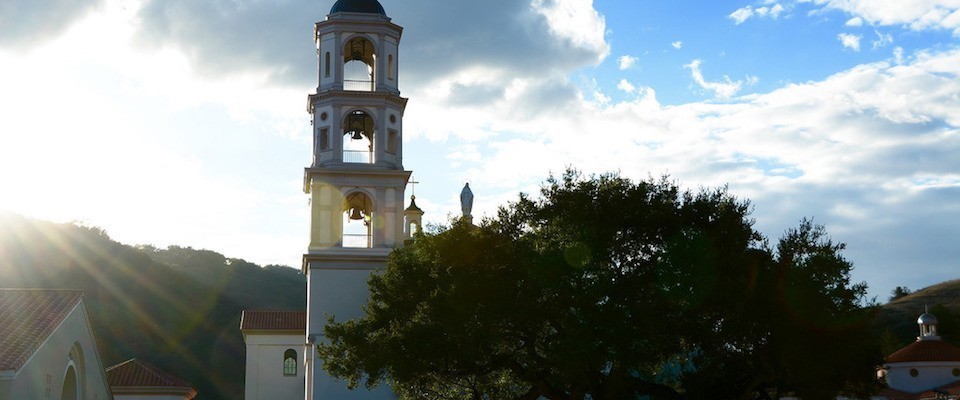
Recent announcements out of two Catholic colleges appear to provide both good news and bad news about the state of Catholic higher education. But even in the bad news, one can find reasons for hope.
First, the good news. In early February, my alma mater, Thomas Aquinas College in Southern California, announced that it was acquiring property in Massachusetts for its second campus. On track to start educating students in fall 2018, the new school will occupy a historic property on more than 200 acres in Northfield, Massachusetts, 90 miles northwest of Boston.
The property had been the location of a high school founded by the nineteenth-century Protestant evangelist Dwight Moody. It comes primarily as a gift from the National Christian Foundation. Hobby Lobby Stores had acquired the property with the intention of giving it to an institution that would “maintain it and continue the Moody legacy of Christian education.”
That a mainline Protestant organization would grant property to a Catholic college is striking enough, and the choice of Thomas Aquinas College is particularly encouraging. This donation helps the school, which opened its doors in 1971, expand its Great Books–based liberal arts education. It provides the school with a foothold on the East Coast, just as the similar St. John’s College has campuses in both Maryland and New Mexico.
We are seeing a trend in Catholic higher education toward schools like Thomas Aquinas College (TAC to its friends). Consider Wyoming Catholic College, which opened in 2007 and offers a similar program, adding an outdoor element. Or take Benedictine College in Kansas, an older school that became reinvigorated when it committed itself fully to Catholic education.
Now, the other news—not so good, on first consideration. In March, Aquinas College in Nashville announced that it would reduce its program offerings to focus on “preparing teachers to serve the Church in its mission of education.” Aquinas College became a four-year institution in 1994, with a mission to provide spiritual and professional formation for Catholic teachers and catechists. It added subjects other than education, starting with nursing, in 1996. One newspaper reported that, with the removal of these other disciplines, about 60 of the college’s employees will be let go, and as many as 140 students will need to complete their education elsewhere.
So many of the men and women who have been formed in classical schools such as TAC have seen the need for a fundamental rethinking of, and recommitment to, Catholic education. They have become teachers and administrators at schools around the country. They have developed and led homeschooling programs. They have created and run organizations aimed at restoring a classical liberal arts education for students of all ages.
The reconfiguration of Aquinas College to focus on its original mission is in part an acknowledgment of what is needed if we are to continue this rethinking of Catholic education. The more young, orthodox Catholics we can get on the faculties of parish or private schools—heck, even public schools—the better prepared our children will be for life as faithful and thoughtful Catholics. One can easily cite so many statistics showing this need, especially when the image of religious sisters running classrooms has all but disappeared. Consider this: Between 1960 and 2015, the National Catholic Educational Association tells us, the number of priests and religious (mostly sisters belonging to orders specializing in education) in Catholic schools dropped from 112,000 to 4,200. As a percentage of teachers in our Catholic schools, this drop was from 74 percent to less than 3 percent.
This decline reflects not only the shifting priorities among orders of religious sisters, but the near-decimation of the female religious life itself. Georgetown University’s Center for Applied Research in the Apostolate, one of the best trackers of Catholic trends, reports that, while the number of priests has dropped 37 percent since 1965, and seminarians are down 58 percent, the number of religious sisters is now about a quarter of what it was that year.
Recently, our youngest daughter’s private primary school in the suburbs of St. Louis was blessed with a visit from Archbishop Salvatore Cordileone of San Francisco. He said Mass for the students in their cafeteria and led them in the Stations of the Cross before speaking at the annual benefit dinner.
In his remarks, Archbishop Cordileone spoke about the importance of two virtues that are considered countercultural today, humility and chastity: “Catholic schools, with few exceptions, are the only schools that attend to forming their students in these virtues. Unlike most other schools, this is part and parcel of what Catholic schools are all about.” This only makes sense. The purpose of a liberal arts education is to create men and women who are truly and fundamentally free—not enslaved by their passions or their pride.
The archbishop’s observation was echoed in recent comments from Sister Elizabeth Anne, O.P., who runs Aquinas College’s Center for Catholic Education: “The values of our current culture are pressure points for us because our chief values are the Beatitudes. And they’re counter-cultural. There’s not a lot in our culture that supports being poor in spirit or meek or suffering. So to really see the beauty in doing that—that the Church expects us to do that, gives us the means to do that—it’s very hope-filled.”
The survival of authentically Catholic education is of paramount importance. With growth in Catholic colleges and universities that take their faith seriously, and with schools like Aquinas College forming a generation of teachers, there are more than enough reasons for hope.
[Source :-firstthings]

